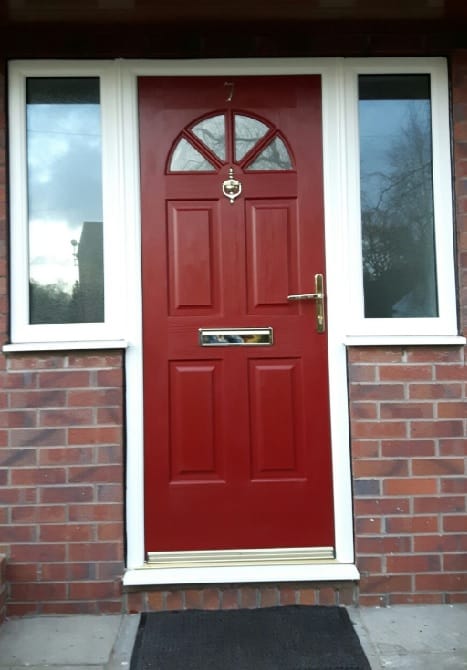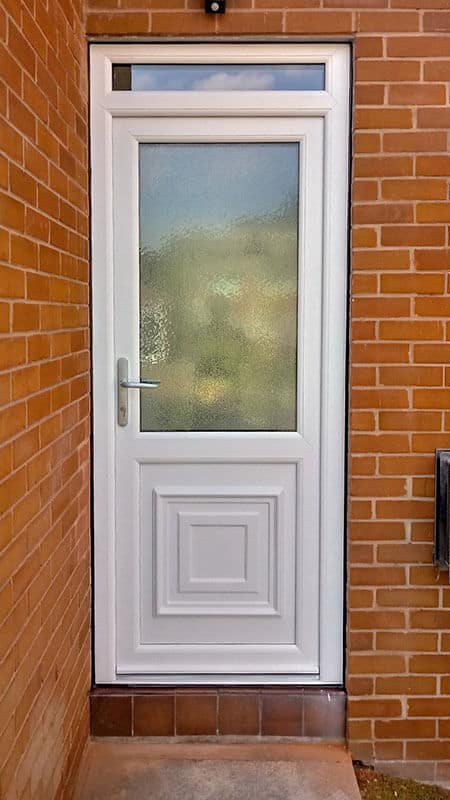The Essential Guide to Standard Door Size in The UK
There are no specific regulations for doors in people’s homes in the UK, but there are general building regulations that...
Read MoreLast Updated: 29 April 2025
 Interested in either a composite door or a uPVC entrance door for your home? Well, there are a few things you need to be aware of first. Here is a short list of quick facts so you can decide which type of door is best suited to your requirements!
Interested in either a composite door or a uPVC entrance door for your home? Well, there are a few things you need to be aware of first. Here is a short list of quick facts so you can decide which type of door is best suited to your requirements!
uPVC is designed to be easy to clean, meaning you needn’t worry about over-exerting yourself to keep a uPVC door looking its best. The Glass Reinforced Plastic exterior of a composite entrance door is equally straightforward to keep free from dirt.
Reddish’s range of composite doors feature a unique solid timber core and are 10% thicker than competing composites. Additionally, there is a multi-point locking system in place, making them astoundingly durable and secure. However, uPVC doors will secure your home extremely well too because they are also fitted with multipoint locks.
Our composite front doors are available in 256 colour combinations but our uPVC entrance doors are available in any RAL colour. Both are available with woodgrain effect finishes, a variety of furniture, different door styles and glazing options. Therefore, you can easily adapt both types of door to your home and to your liking.
Of the two different door materials, composite doors cost more to install than uPVC ones. So if it’s essential to minimise your initial outlay as much as possible, uPVC doors are your best option. However, composites are expected to last for a longer length of time and they offer superior levels of thermal insulation for your home. The better a front door insulates your home the less you’ll have to spend on energy bills. Factoring all this into account, composite entrance doors are likely to constitute better value in the long run.

uPVC doors utilise uPVC’s naturally insulating qualities along with multi-chambered profiles that have been specially designed to trap heat. Therefore, they are extremely thermally efficient. On the other hand, our composites are fitted with an ultra-dense timber core. Wood is a natural insulator in its own right. Generally, they just about outperform uPVC doors in this aspect.
If you happen to live in a conservation area, your front door options are likely to be more limited, especially if an Article 4 direction is in place there. Article 4 directions prohibit specific alterations being made to your property and can include front doors. In conservation areas, it’s quite common for timber doors to be fitted and those that are more traditional in appearance. The exterior of a composite door is designed to reflect a traditional timber door so could be more likely to gain planning approval than a uPVC door in these areas. However, it’s not possible to say this for sure as the restrictions vary from one conservation area to the next.
If you’re interested in learning about how composite doors fare against timber doors, why not check out our blog on Timber doors vs composite doors? Or if you require further clarification on the qualities of the entrance doors we have available, give a member of our friendly team a call on 0161 969 7474 or contact us online.
There are no specific regulations for doors in people’s homes in the UK, but there are general building regulations that...
Read MoreWhen we speak to our customers, they often inform us of the many home improvement projects they’re looking to complete...
Read MoreAbsolutely! Bifold doors are perfect additions to conservatories thanks to their slim sightlines and large panes of glass. Conservatories are...
Read MoreUnfortunately, thieves are becoming smarter and working out new ways to break into our homes. It means our home security...
Read More